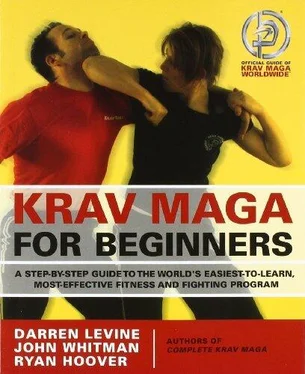1Keeping your shoulders/elbows stabilized and your midsection tight, curl the band up and in to your chest. Keep your knees soft, your shins forward, and your weight even on both feet.
Return to starting position.
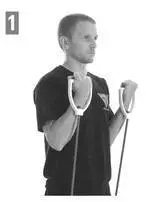
target: chest

Starting Position:Assume Top of Push-Up alignment position (page 57).
1Lower your body, touching your chest and hips to the ground at the same time.
2Push back up to the starting position. Resist collapsing your spine or throwing your head forward. Maintain alignment (heels to top of head) by lifting your spine at the base of your neck so your head isn’t hanging.

target: back, arms
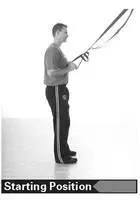
Starting Position:Place the Jungle Gym in a door with the door attachment. Hold the handles and take 4 steps back and measure the handles to your hips.
1Lean your body back to 60 degrees with your arms straight and feet flat on the floor.
2Pull your body upwards until your hands touch the outsides of your chest. Use your legs to assist the movement as needed.
Return to starting position.
Once this becomes easy, you can try leaning back 90 degrees.

target: core
The Position:Assume Top of Push-Up alignment position (page 57), then lower down to your elbows. Maintain correct alignment from your heels to the top of head. Hold the position, lifting your spine from the base of your neck so your head doesn’t hang.
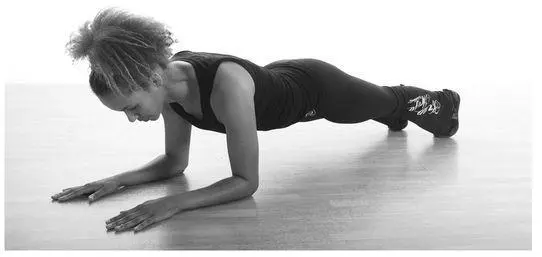
target: legs

Starting Position:Assume Standing Alignment posture (page 56).
1Keeping your chest forward and open, sit your butt back and down toward your heels, going as low as you can while maintaining alignment. Keep your weight even on both feet.
Return to standing.

target: full body
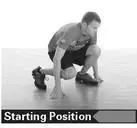
Starting Position:Squat down and place your hands on the floor just to the outsides of your feet. Your fingers should face out.
1Jump your feet back to the incline posture position and drop your hips to the floor.
2Spring up to fighting stance.

See pages 39-40 for step-by-step instructions. Once you get the hang of moving forward, backward, and side to side, add in straight punches, Inside Defense, 360° Defense. Keep moving, maintaining proper footwork—it helps to imagine fighting off an attacker, defending and counterattacking. Finally, add kicks, knees, and takedown defenses (sprawl).
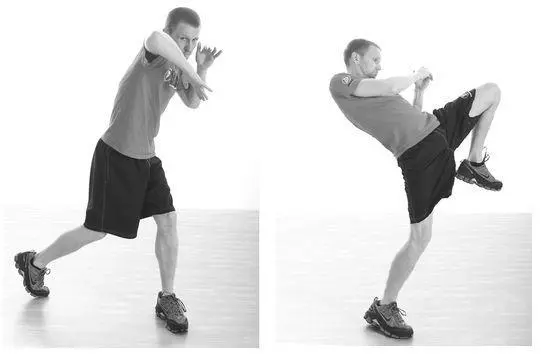

Starting Position:Assume Standing Alignment posture (page 56).
1Jump rope forward and backward with single revolutions between jumps. Control your jump by jumping just enough to get the rope under your feet. Land as quietly as possible.
If you’ve never jumped rope before, begin with the X-Drill (page 63). This drill subscribes to the notion that if you can’t perform an exercise, take it back a step and break down the movements to their basic elements. Perform the basic movements until you can do them easily and then progress up.

Starting Position:Begin by placing two jump ropes on the floor in an ʺX.ʺ Stand in one part of the X, close to the center.
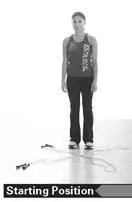
1-2Squat down to a quarter-down position with your heels off the ground and then jump with both feet over the rope, just enough to miss the rope. Progress to both feet jumping forward and back over the rope, then try jumping both feet right into the next section and back. Finally, go crazy and jump from quadrant to quadrant.
Now keep time, building up to one minute of continuous jumping. Stage one complete—go buy a jump rope.
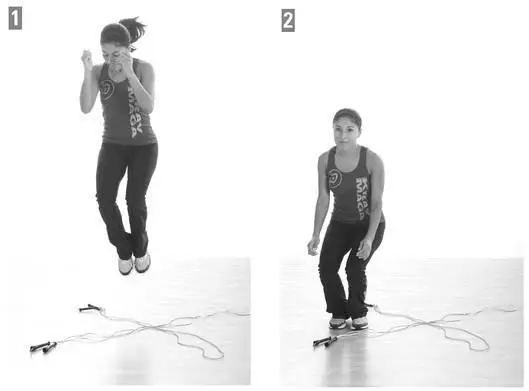
Krav Maga is a street fighting system. Most often, violent attacks occur when the defender is taken by surprise and is not ready or able to assume a “fighting” stance. Therefore, students of Krav Maga must learn to defend from many different positions, including when they have a very low state of readiness, and to respond to danger even from a neutral position. In basic Krav Maga training, emphasis is placed on three primary training positions. These basic elements are the tools you’ll use to create effective and efficient reactions to a violent encounter. They are literally the foundation of each technique.
Neutral Position.Most self-defense in Krav Maga is trained from a position of disadvantage, commonly referred to as neutral position. This position is actually the absence of a stance. It’s your natural, unprepared position, and it’s a major component of Krav Maga training. Training from the neutral position allows the student to perform techniques when “late” or caught off guard.
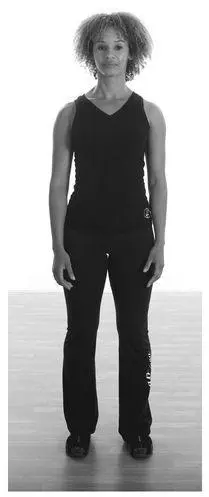
Neutral position
The Stance: Stand with your feet about hip-width apart (or less), with your arms hanging to the sides.
Читать дальше
